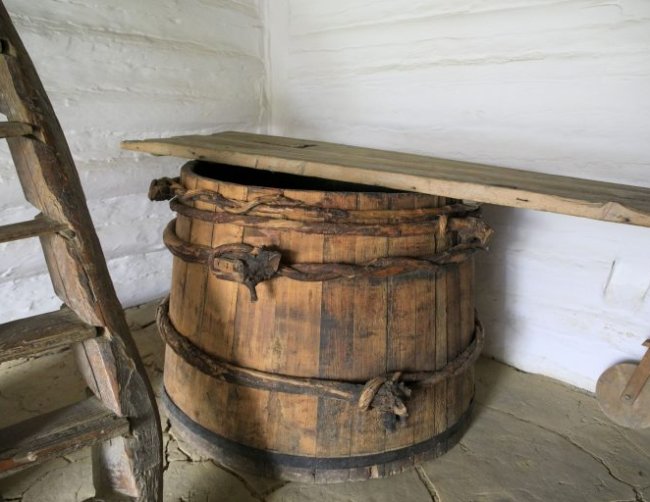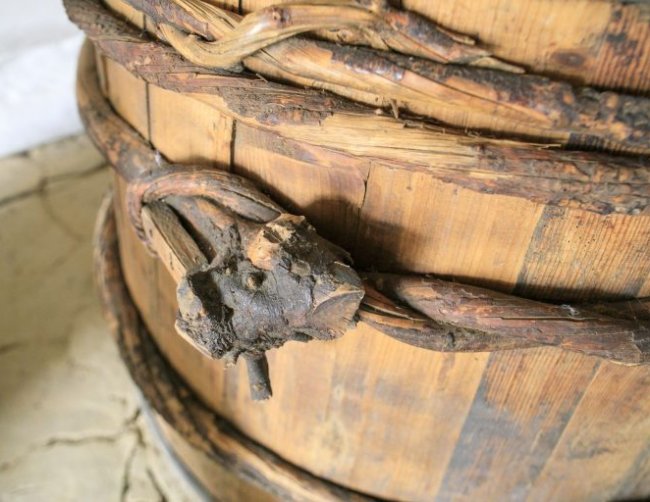Object
Cabbage barrel
Information
Inventory no
MNS KW 6295, EI/1121
Department
Ethnography Department
Material
softwood
Copyright classification
Description
In the corner of the hall of the cottage from Gostwica in the Sądecki Ethnographic Park, there is a barrel of small size. Its height is almost 1 meter, while the upper diameter is 1.2 meters! Unfortunately, we will disappoint all listeners during relaxing baths. In the context of the reality of the 19th-century countryside, it follows that this is the largest barrel, and therefore a larger amount of water, which is a real waste! Can you imagine how much an analysis with water carriers for a nearby well or efficient stream would have to be calculated to count such a vessel? The described exhibit had a lot of practical use, especially for pickling cabbage.
In order to pickle the cabbage, first you had to carefully wash the "tricks" (because that's how the barrel was called) with lye and scald. Then shredded cabbage was thrown into it, to which salt, cumin, sometimes carrots and even apples were added. Men with their "trousers" rolled up under their knees jumped into the barrel and trampled the cabbage with their feet, which they had previously soaked and washed in lye. The barrel was never filled to the brim, so that the secreted juice would not spill out. Finally, the surface of the cabbage was covered with scalded planks pressed down with a stone. A somewhat archaic way of pickling cabbage was to place whole heads in the "comb mushroom" with apples stuck between them. Cabbage was the basic food product in the rural diet, poor in meat or some vegetables and fruits known to us today. In addition, it could be a kind of remuneration for poorer villagers who helped farmers in field work such as harvesting or excavation.
In addition to the impressive size and use, the workmanship of the barrel is also surprising. The vessel was made using the cooper technique, which consists in a tight arrangement of staves, i.e. narrow boards, then fastened with wooden or metal hoops. In the case of the open-air barrel, apart from one metal hoop, the entire structure is fastened with bent juniper roots. This material was characterized by particular flexibility and strength. The roots were previously soaked, and then applied to the entire structure, creating hoops, which, after drying, solidly bonded. It's interesting how inventive and resourceful our ancestors were!
Kamil Basta
Major literature:
Tomasz Czerwiński, "Equipping a country house in Poland", Warsaw 2009
Zenon Piotr Szewczyk, "Our daily bread, or the cuisine of Lachy Sądeckie", Nowy Sącz 2010
Zenon Piotr Szewczyk, "Dictionary of the dialect of Lachów Sądeckie", Podegrodzie 2014


